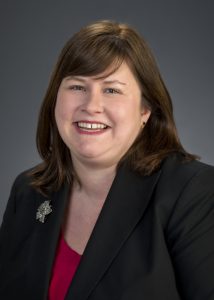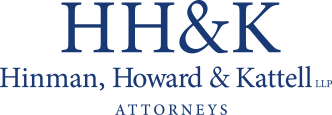Dear Clients and Friends:
We know that there is a lot of information out there, and not all of it is accurate. We want to keep you informed. Please join us on Thursdays at noon for our update on laws relating to the coronavirus and the workplace. We will send out information on registration on Monday for next week. If you were not able to attend our last webinar, we are working to post the audio on our website.
The following are updates you should be aware of:
Executive Order by Governor Cuomo
Governor Cuomo signed executive orders requiring reduction of workforces at “non-essential” businesses across the state. The first required a 50% reduction in workforce by 8 p.m. on Friday March 20, 2020. The second requires a 75% reduction in workforce by 8 p.m. on Saturday March 21, 2020. The latest order requires a 100% reduction in workforce by 8 p.m. on Sunday March 22, 2020 for non-essential businesses. The complete list of “essential” businesses exempt from the reduction in workforce requirement is contained at: https://esd.ny.gov/guidance-executive-order-2026.
The Empire State Development Corporation website also includes the process for requesting an exemption as an essential business if you are not included on the list. Please note that if part of your business is an essential business and part is not deemed essential, you will need to reduce your employees who are not working on (or supporting) the essential part of the business.
Similar restrictions are in effect in neighboring states.
Additional Closures
Bars and restaurants are limited to takeout and delivery only. Gyms and fitness facilities and theaters are closed. Retail shopping malls, amusement parks and bowling alleys were closed as of 8 p.m. on March 19, 2020. Effective March 21, 2020 at 8 p.m. and until further notice, all barbershops, hair salons, tattoo or piercing parlors and related personal care services including nail technicians, cosmetologists and estheticians, the provision of electrolysis, and laser hair removal services are closed.
Families First Act (Federal)
The Families First Act will go into effect no later than April 2, 2020. Regulations will be forthcoming this week. All provisions of the Act end (sunset) on December 31, 2020. It is not clear whether the provisions will apply retroactively. Employers are encouraged to keep good records so that they may be used to support claims for tax credits. The Act applies only to employers with fewer than 500 employees.
The Act contains both a paid emergency sick leave provision and an amendment to the Family and Medical Leave Act to cover other types of leave (such as school closures).
Federal Emergency Sick Leave
Who is Eligible?
Every employee of an employer.
What can it be used for?
It can be used for (1) self-isolation because the employee is diagnosed with coronavirus; (2) obtaining a medical diagnosis or medical care if an employee is experiencing the symptoms of coronavirus. (3) complying with a recommendation or order by a public official with jurisdiction or a health care provider that the physical presence of the employee on the job would jeopardize the health of others because of (A) the exposure of the employee to coronavirus; or (B) exhibition of symptoms of coronavirus by the employee. (4) caring for or assisting a family member of the employee who meets the criteria above; or caring for the child of such employee if the school or place of care has been closed, or the child care provider of such child is unavailable, due to coronavirus.
What is the benefit?
Full time employees will receive 80 hours of paid sick leave for reasons other than caring for a family member. Part Time employees will receive the equivalent of what they typically work in a two-week period. The paid sick leave is paid at the regular rate or state minimum wage, whichever is greater.
Employees caring for a family member will receive 2/3 of their pay during the 80 hours.
Employees have the right to insist on using this leave first. An employer cannot require an employee to use other leave first. Employers cannot require employees to obtain coverage for their absence.
Employers may not retaliate against employees for taking sick leave under the Act.
Family and Medical Leave Amendment
The Family and Medical Leave Act has been amended to provide additional leave for employees. This applies to an employee who has been employed at least thirty (30) days with his/her employer. It applies when an individual has to provide care for a son or daughter under 18 because school or daycare are closed. The Act excludes healthcare providers and emergency responders. Employers with fewer than 50 employees are excluded if payment would jeopardize the business as a going concern.
What Is Provided
Employees are initially provided with 10 days of unpaid leave. Employees must be allowed to substitute any paid leave available to them (including federal or state paid leave as appropriate). Employers may not require employees to substitute any paid leave available to them.
After 10 days, the employer pays 2/3 pay for up to twelve weeks. In accordance with FMLA, an employer must return the employee to their job or a similar job. For employers with fewer than 25 employees for whom that is not possible because the job no longer exists due to changes in the business caused by coronavirus, the employer must try to restore the employee to their job or any job during the one-year period following the leave.
New York Paid Emergency Sick Leave
New York has enacted two forms of paid sick leave. One specific to the Coronavirus that will go into effect immediately and a permanent sick leave that will go into effect in 180 days. Because we expect additional guidance on the permanent sick leave program, this letter will only address the emergency sick leave for coronavirus that is effective immediately.
The emergency sick leave is only available to an individual who is subject to a “mandatory or precautionary order of quarantine or isolation issued by the state of New York, the Department of Health, local board of health, or any governmental entity duly authorized to issue such order due to COVID-19” or to a person who must provide care for “a minor dependent child of the employee who is subject to a mandatory or precautionary order of quarantine or isolation issued by the state, the Department of Health, a local board of health, or any government entity duly authorized to issue such order due to COVID-19.”
Employers with 100 or more employees must provide 14 days of paid sick leave (i.e. sick leave for the period of required isolation).
Employers with 11-99 employees must provide 5 days of paid sick leave. After 5 days, the employee will be able to qualify for either Paid Family Leave or disability with no waiting period.
Employers with 10 or fewer employees AND a net income greater than one million dollars must provide 5 days of paid sick leave. After 5 days, the employee will be able to qualify for either Paid Family Leave or disability with no waiting period.
Employers with fewer than 10 employees who do not meet the one million dollar net income threshold must provide for 14 days of unpaid sick leave. Employees will be able to qualify for either Paid Family Leave or disability with no waiting period.
This law will not apply in cases where “an employee is deemed asymptomatic or has not yet been diagnosed with any medical condition and is physically able to work while under a mandatory or precautionary order of quarantine or isolation, whether through remote access or other similar means.”
An employee who travels to a county included in the CDC’s list of places to avoid is not eligible for sick leave unless the travel was for work.
Employees may take both disability (for their own illness) and Paid Family Leave (to care for a qualifying dependent) at the same time up to a maximum of $840.70 for PFL and $2,043.92 for disability.
The law does not provide for benefits to an employee who is out of work due to school closures.
The law also has a carve out that provides that the emergency sick leave will not be in addition to any federally-provided sick leave and/or other benefits to employees in response to the pandemic (such as the Family First Act). Instead, an employee will be able to receive an amount that is the difference between benefits available under the state law and any federal law or regulation.
Putting It All Together
Employers with 500 or more employees will only be subject to the New York emergency paid sick leave.
Employers with fewer than 50 employees will be subject to both laws unless they can show compliance would jeopardize the business as a going concern. Guidance on making this showing is expected.
Employers with fewer than 500 employees and more than 50 employees will be required to comply with both laws.
Example #1—Individual diagnosed with Coronavirus at a Place of Business between 500 and 50 employees
An individual who is diagnosed with Coronavirus who qualifies under both laws will be able to use any available time under the federal emergency paid sick leave statute first. Employees could also use their New York emergency sick leave to supplement any federal leave if necessary.
Example #2—Individual whose child is out of school
An individual whose child is out of school does not qualify under the New York law. They will be able to take emergency sick leave under the federal law at 2/3 pay for 10 days, and then will be able to take FMLA under the new amendment at 2/3 pay for 12 weeks.
Tax Credits
The IRS and Treasury Department have provided guidance for claiming tax credits on their website. This section is a summary of that announcement.
For an employee who is unable to work because of Coronavirus quarantine or self-quarantine or has Coronavirus symptoms and is seeking a medical diagnosis, eligible employers may receive a refundable sick leave credit for sick leave at the employee’s regular rate of pay, up to $511 per day and $5,110 in the aggregate, for a total of 10 days.
For an employee who is caring for someone with Coronavirus, or is caring for a child because the child’s school or child care facility is closed, or the child care provider is unavailable due to the Coronavirus, eligible employers may claim a credit for two-thirds of the employee’s regular rate of pay, up to $200 per day and $2,000 in the aggregate, for up to 10 days. Eligible employers are entitled to an additional tax credit determined based on costs to maintain health insurance coverage for the eligible employee during the leave period.
Child Care Leave Credit
In addition to the sick leave credit, for an employee who is unable to work because of a need to care for a child whose school or child care facility is closed or whose child care provider is unavailable due to the Coronavirus, eligible employers may receive a refundable child care leave credit. This credit is equal to two-thirds of the employee’s regular pay, capped at $200 per day or $10,000 in the aggregate. Up to 10 weeks of qualifying leave can be counted towards the child care leave credit. Eligible employers are entitled to an additional tax credit determined based on costs to maintain health insurance coverage for the eligible employee during the leave period.
Prompt Payment for the Cost of Providing Leave
Under guidance that will be released next week, eligible employers who pay qualifying sick or child care leave will be able to retain an amount of the payroll taxes equal to the amount of qualifying sick and child care leave that they paid, rather than deposit them with the IRS.
The payroll taxes that are available for retention include withheld federal income taxes, the employee share of Social Security and Medicare taxes, and the employer share of Social Security and Medicare taxes with respect to all employees.
If there are not sufficient payroll taxes to cover the cost of qualified sick and child care leave paid, employers will be able file a request for an accelerated payment from the IRS. The IRS expects to process these requests in two weeks or less. The details of this new, expedited procedure will be announced next week.
Equivalent child care leave and sick leave credit amounts are available to self-employed individuals under similar circumstances. These credits will be claimed on their income tax return and will reduce estimated tax payments.
The complete announcement of guidance may be found at: https://home.treasury.gov/news/press-releases/treasury-irs-and-labor-announce-plan-to-implement-coronavirus-related-paid-leave-for-workers-and-tax-credits-for-small-and-midsize-businesses-to-swiftly-recover-the-cost-of-providing-coronavirus-related-leave. We expect additional guidance in the next week. One question that is not clear is whether an employer may start providing leave under these statutes immediately. We expect to have further guidance this week.
Please also note, both the IRS and New York State have extended the income tax filing deadline to July 15.
Conclusion
Additional explanation of the laws is available from the Department of Labor at: https://www.dol.gov/agencies/whd/pandemic/ffcra-employee-paid-leave. Regulations are expected on an expedited basis for each of these laws which will provide additional guidance. In the meantime, please feel free to contact one of our Labor and Employment attorneys.

| Thomas A. Conlon Partner 80 Exchange Street Binghamton, NY 13901 Phone: (607) 231-6744 Email: tconlon@hhk.com |

| John Fish Partner 80 Exchange Street Binghamton, NY 13901 Phone: (607) 231-6712 Email: jfish@hhk.com |

| Dawn J. Lanouette Partner 80 Exchange Street Binghamton, NY 13901 Phone: (607) 231-6917 Email: dlanouette@hhk.com |
For a printable version of this Client Alert, click here.
Copyright © 2020 by Hinman, Howard & Kattell LLP. This Client Alert is provided as a general information service to clients and friends of Hinman, Howard & Kattell, LLP. It should not be construed as, and does not constitute legal advice on any specific matter, nor does this message create an attorney-client relationship. These materials may be considered Attorney Advertising in some states.
